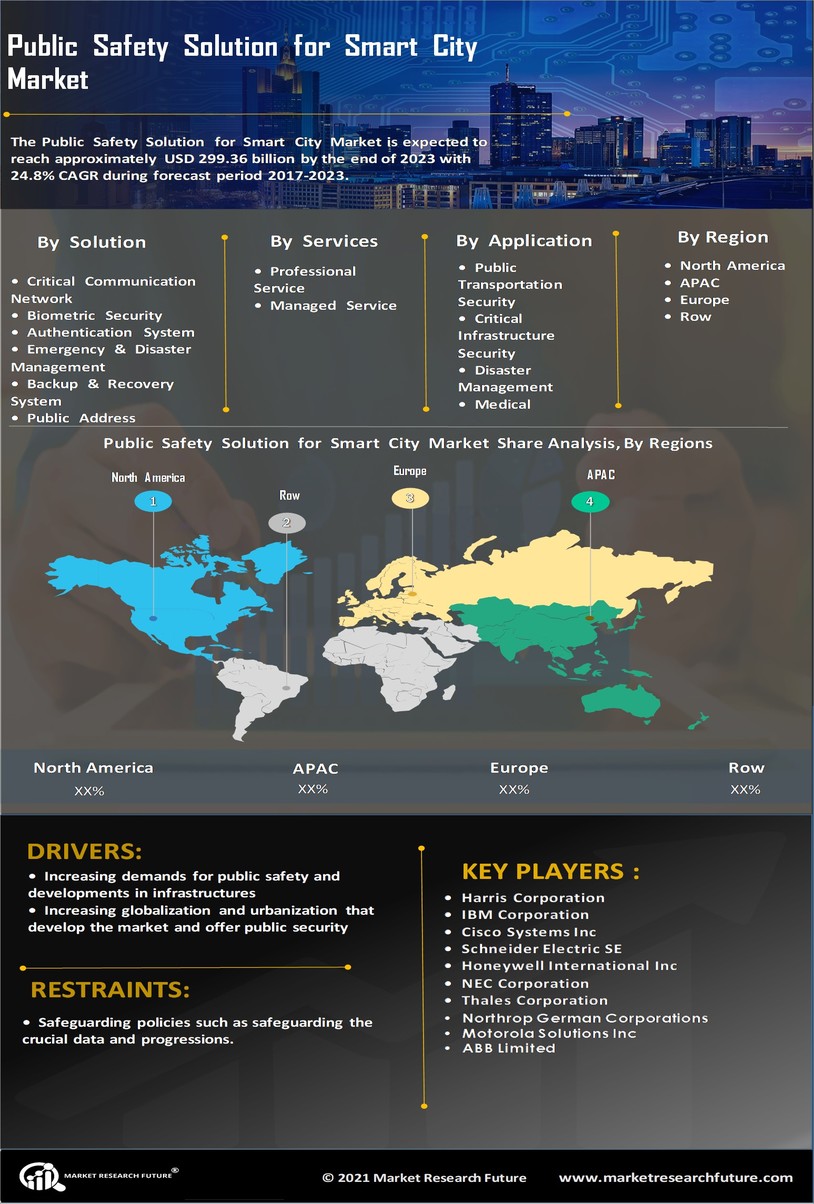Rising Crime Rates
Rising crime rates in urban areas are a pressing concern that drives the Public Safety Solution for Smart City Market. As cities grapple with increasing incidents of crime, there is a heightened urgency to implement effective safety measures. Recent data indicates that property crime rates have surged by 10% in several metropolitan areas, prompting local authorities to seek innovative solutions. This trend underscores the necessity for advanced surveillance systems, predictive policing technologies, and community engagement platforms. The Public Safety Solution for Smart City Market is thus positioned to address these challenges, providing cities with the tools needed to enhance public safety and reduce crime rates.
Increasing Urbanization
The rapid pace of urbanization is a pivotal driver for the Public Safety Solution for Smart City Market. As more individuals migrate to urban areas, the demand for effective public safety measures escalates. According to recent statistics, urban populations are projected to reach 68% by 2050, necessitating advanced safety solutions to manage the complexities of densely populated environments. This trend compels city planners and governments to invest in innovative technologies that enhance public safety, such as surveillance systems, emergency response frameworks, and integrated communication networks. The Public Safety Solution for Smart City Market is thus positioned to grow as municipalities seek to address the challenges posed by urban density, ensuring the safety and security of their residents.
Technological Advancements
Technological advancements play a crucial role in shaping the Public Safety Solution for Smart City Market. Innovations in artificial intelligence, machine learning, and data analytics are transforming how cities approach safety and security. For instance, AI-driven surveillance systems can analyze vast amounts of data in real-time, identifying potential threats and enabling quicker responses. The market for smart city technologies is expected to reach USD 2.5 trillion by 2025, indicating a robust investment in public safety solutions. These advancements not only enhance the efficiency of law enforcement agencies but also foster a proactive approach to crime prevention. As cities increasingly adopt these technologies, the Public Safety Solution for Smart City Market is likely to experience substantial growth.
Government Initiatives and Funding
Government initiatives and funding are instrumental in propelling the Public Safety Solution for Smart City Market. Many governments are recognizing the importance of investing in public safety infrastructure to enhance the quality of life for their citizens. For example, various national and local governments have allocated significant budgets for smart city projects, with public safety being a primary focus. In 2023, it was reported that public safety budgets in major cities increased by 15%, reflecting a commitment to improving safety measures. This financial backing enables the development and implementation of advanced safety solutions, such as smart surveillance systems and emergency response technologies. Consequently, the Public Safety Solution for Smart City Market is likely to benefit from sustained government support and funding.
Public Awareness and Demand for Safety
Public awareness and demand for safety are significant factors influencing the Public Safety Solution for Smart City Market. As citizens become more informed about safety issues, they increasingly expect their local governments to prioritize public safety initiatives. Surveys indicate that over 70% of urban residents consider safety a top priority, leading to greater demand for effective safety solutions. This heightened awareness drives municipalities to invest in technologies that enhance public safety, such as smart lighting, emergency alert systems, and community policing initiatives. The Public Safety Solution for Smart City Market is thus likely to expand as cities respond to the growing expectations of their residents, striving to create safer urban environments.


















Leave a Comment